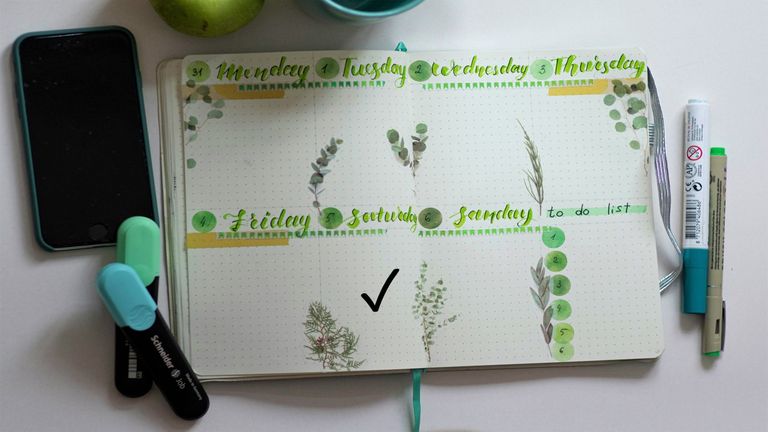
Unsplash

Sábado, 22 de febrero, 2025.
Estuve revisando un poco las efemérides de hoy y encontré algo interesante, justamente porque ayer viernes salí un momento a disfrutar con mis amigos de una velada entretenida porque una de ellas estaba de cumpleaños, así que, después de salir del trabajo, nos fuimos a un bar a festejar el acontecimiento.
De acuerdo a lo que encontré en internet, en algunos lugares le dan importancia en este día al coctel Margarita: una bebida alcohólica mexicana que se prepara con tequila y limón, con hielo o sin él. Yo lo he probado en un par de ocasiones y no me desagrada el sabor, pero como no soy una mujer que sea amante a ingerir bebidas alcohólicas, no forma parte de mis gustos culinarios de acompañamiento.

Tenor
Los cócteles tienen una historia tan colorida como las bebidas mismas. Sus orígenes se entrelazan con el comercio de especias, la piratería, las tabernas clandestinas y la creatividad de los bartenders a lo largo de los siglos. Se dice que la palabra "cocktail" apareció por primera vez en un periódico estadounidense en 1806, donde se definía como una mezcla de licores, azúcar, agua y bitters. Sin embargo, la práctica de combinar bebidas alcohólicas con otros ingredientes es mucho más antigua.
En el siglo XVII, marineros británicos y holandeses mezclaban ron con jugo de limón para prevenir el escorbuto, una costumbre que eventualmente dio origen a bebidas clásicas como el grog y el punch. Mientras tanto, en el Caribe y América del Sur, los habitantes locales experimentaban con caña de azúcar fermentada, frutas tropicales y especias, creando los predecesores de cócteles como el mojito y la caipiriña.
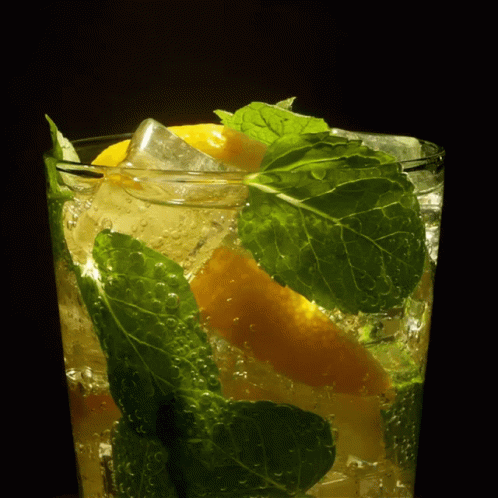
Tenor
Durante el siglo XIX, la coctelería evolucionó con la aparición de los primeros bares dedicados exclusivamente a la preparación de mezclas sofisticadas. En Nueva Orleans, el farmacéutico Antoine Peychaud popularizó el Sazerac, considerado por muchos como el primer cóctel oficial. La Revolución Industrial y la expansión de las redes ferroviarias facilitaron la distribución de destilados y licores, lo que permitió que las recetas se diversificaran y se perfeccionaran.
La Ley Seca en Estados Unidos (1920-1933) paradójicamente impulsó la cultura de los cócteles, ya que los contrabandistas mezclaban alcohol de baja calidad con jugos, jarabes y otros ingredientes para disimular su sabor. Durante esta época nacieron clásicos como el Sidecar y el Bee’s Knees, mientras que muchos bartenders emigraron a Europa y América Latina, llevando su conocimiento y técnicas a nuevos mercados.
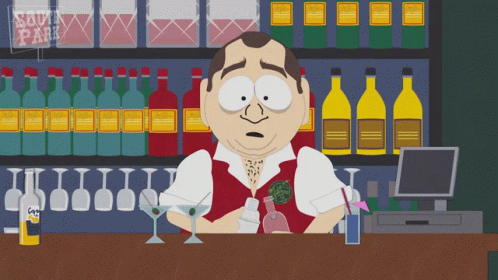
Tenor
En la segunda mitad del siglo XX, la coctelería vivió diferentes fases. Los años 50 y 60 estuvieron marcados por la influencia de la cultura tiki, con tragos exóticos como el Mai Tai y el Zombie. En los 80 y 90, las mezclas se volvieron más dulces y llamativas, con cócteles coloridos y servidos en vasos extravagantes. Sin embargo, en los 2000, hubo un resurgimiento de la coctelería clásica, con bartenders recuperando recetas tradicionales y elaborando sus propios ingredientes, como jarabes y bitters artesanales.
Hoy en día, la mixología es un arte en constante evolución. Los bartenders experimentan con técnicas modernas como la esferificación, la infusión y la carbonatación para crear experiencias sensoriales únicas. La sostenibilidad también ha ganado protagonismo, con bares que buscan reducir el desperdicio y utilizar ingredientes locales y de temporada. La historia de los cócteles es la historia de la innovación, la adaptación y, sobre todo, el placer de compartir una buena bebida en buena compañía.
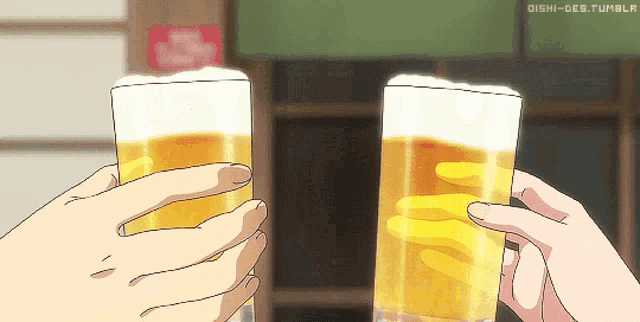
Tenor
El cóctel Margarita es fresco y equilibrado, entre dulce, ácido y salado, su origen está envuelto en misterio, con múltiples versiones que se disputan la autoría. Quizás esa incertidumbre lo hace aún más especial, como si cada historia le añadiera una nota de sabor distinta a su ya icónica mezcla de tequila, licor de naranja y jugo de lima.
Algunas leyendas hablan de una socialité de los años 30 llamada Margarita Sames, quien supuestamente lo preparó por primera vez en una fiesta en Acapulco para impresionar a sus invitados. Otros relatos apuntan a Carlos "Danny" Herrera, un bartender en Tijuana que, en los años 40, lo habría creado para una bailarina alérgica a los destilados fuertes pero que sí toleraba el tequila. También está la teoría de que fue ideado en honor a Margarita Henkel, hija de un embajador alemán, o que simplemente evolucionó a partir de un cóctel llamado "Daisy" (Margarita en español), que ya combinaba cítricos y licor con diferentes destilados.
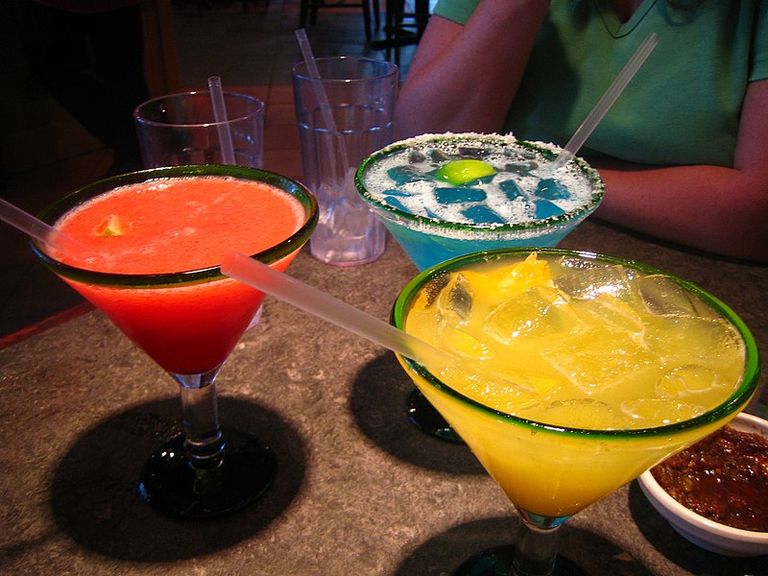
Independientemente de su verdadera cuna, lo cierto es que el Margarita se convirtió en el cóctel más representativo de la cultura mexicana, trascendiendo fronteras y épocas. No es solo una bebida, es un símbolo de disfrute, de sol y playa, de reuniones que se alargan con la música de fondo y las risas compartidas. Su versatilidad también ha jugado un papel clave en su permanencia, con innumerables variaciones que incluyen frutas, picantes e incluso versiones congeladas que lo transforman en un refrescante granizado.
Quizás la razón de su éxito no radica solo en sus ingredientes o en su equilibrio de sabores, sino en lo que representa. El Margarita es la invitación a relajarse, a tomarse un momento para disfrutar del instante, sin prisas ni preocupaciones. Y aunque su historia no tenga una única verdad absoluta, lo que sí es indiscutible es que, con cada sorbo, evoca el espíritu vibrante de la hospitalidad y la alegría.
El tema del alcohol siempre ha sido una conversación abierta entre la tradición, el placer y la conciencia. Está presente en celebraciones, encuentros y momentos de descanso, casi como un compañero de fondo que parece inofensivo si se maneja con moderación. Sin embargo, la cuestión va más allá de una simple medida de autocontrol o de los efectos en la salud. No se trata solo de evitar excesos por razones médicas, sino de preguntarse qué tanto realmente aporta o si simplemente hemos normalizado su presencia sin cuestionarla demasiado.
A lo largo del tiempo, se ha construido una idea de que el alcohol es un elemento esencial para socializar, relajarse o marcar momentos especiales. Está tan arraigado que muchas veces se siente como una imposición sutil, como si decir que no fuera una decisión extraña, algo que hay que justificar. Pero cuando se observa desde otra perspectiva, se empieza a notar que la vida no pierde intensidad ni significado sin una copa en la mano. Al contrario, la claridad que viene con la sobriedad permite conectar de una manera más auténtica con los momentos y las personas.

Tenor
Hay quienes pueden mantener un consumo esporádico sin mayor impacto, pero también está el riesgo silencioso de que se convierta en un hábito disfrazado de costumbre social. No es cuestión de moralismo ni de reglas rígidas, sino de reconocer que muchas veces el alcohol no suma, sino que resta. Resta energía, claridad, bienestar a largo plazo y, en algunos casos, incluso relaciones y oportunidades. Más allá de lo que la ciencia pueda advertir sobre sus efectos en el cuerpo, la verdadera pregunta es si realmente vale la pena darle un espacio en la vida cuando no hay nada que justifique su presencia más allá de la inercia cultural.
Elegir no beber no significa perderse de nada, sino ganar una perspectiva distinta, una donde la diversión, la conexión y la autenticidad no dependen de una sustancia. No se trata de una restricción impuesta, sino de una elección consciente que abre la posibilidad de disfrutar cada instante sin filtros ni alteraciones. Porque al final, lo que realmente queda en la memoria no es la bebida, sino las experiencias genuinas que se viven con plena conciencia.
Considero que compartir una buena bebida con amigos no tiene por qué depender del alcohol. A veces, la verdadera esencia de un encuentro está en la compañía, en las conversaciones que fluyen sin necesidad de estímulos adicionales. En un mundo donde la cultura de la coctelería ha crecido enormemente, también ha surgido un espacio para las versiones sin alcohol, una alternativa que no solo ofrece opciones deliciosas, sino que además permite disfrutar sin comprometer la claridad ni la sensación de bienestar después.
Las bebidas sin alcohol han dejado de ser simples jugos o refrescos servidos en un vaso bonito. La mixología moderna ha demostrado que la creatividad no tiene límites cuando se trata de combinar sabores, texturas y aromas. Desde versiones sofisticadas de clásicos como el mojito, la piña colada o el gin tonic hasta creaciones completamente nuevas con ingredientes naturales, hierbas frescas y especias, hay un universo de posibilidades que pueden sorprender incluso a quienes nunca han considerado probarlas.

Tenor
Lo interesante de optar por estas alternativas es la forma en que transforman la experiencia de compartir una bebida. En lugar de centrarse en el efecto del alcohol, se disfruta plenamente de cada sorbo, del equilibrio de los ingredientes y del placer de una mezcla bien lograda. Además, abre la puerta a descubrir nuevos sabores y combinaciones que quizás nunca habrían llamado la atención en otro contexto. Un cóctel sin alcohol bien preparado no es simplemente una versión incompleta de uno tradicional, sino una bebida con identidad propia que puede ser tan compleja y sofisticada como cualquier otra.
Más allá del gusto, también está el hecho de que elegir estas opciones elimina cualquier presión implícita en los encuentros sociales. No hay necesidad de justificar la decisión, ni de preocuparse por los efectos posteriores. Se disfruta el momento sin límites, sin perderse en distracciones y sin sentir que es necesario alterar el estado de ánimo para que la velada sea especial. Al final, lo que realmente importa no es lo que hay en el vaso, sino lo que sucede alrededor de él: las risas compartidas, las historias que se cuentan y la sensación de estar presente de manera auténtica.
Pero si te preparas un cóctel Margarita para compartir contigo misma o con tu familia o con tus amigos, que sea con moderación y libre pensamiento y consciencia.
Esta fue una publicación de sábado.
Gracias por pasarse a leer un rato, amigas, amigos, amigues de Blurt.
Que tengan un excelente día y que Dios los bendiga grandemente.
Saludines, camaradas blurtinenses!!

Saturday, february 22th, 2025.
I was looking through today's anniversaries and found something interesting, precisely because yesterday Friday I went out for a moment to enjoy a fun evening with my friends because one of them had a birthday, so, after leaving work, we went to a bar to celebrate the event.
According to what I found on the internet, in some places they give importance on this day to the Margarita cocktail: a Mexican alcoholic drink that is prepared with tequila and lemon, with or without ice. I have tried it on a couple of occasions and I don't dislike the taste, but since I am not a woman who is fond of drinking alcoholic beverages, it is not part of my culinary accompaniment tastes.

Tenor
Cocktails have a history as colorful as the drinks themselves. Their origins are intertwined with the spice trade, piracy, speakeasies, and the creativity of bartenders throughout the centuries. The word “cocktail” is said to have first appeared in an American newspaper in 1806, where it was defined as a mixture of spirits, sugar, water, and bitters. However, the practice of combining alcoholic beverages with other ingredients is much older.
In the 17th century, British and Dutch sailors mixed rum with lemon juice to prevent scurvy, a custom that eventually gave rise to classic drinks like grog and punch. Meanwhile, in the Caribbean and South America, locals were experimenting with fermented sugar cane, tropical fruits and spices, creating the precursors to cocktails like the mojito and caipirinha.

Tenor
During the 19th century, cocktail making evolved with the appearance of the first bars dedicated exclusively to the preparation of sophisticated mixtures. In New Orleans, pharmacist Antoine Peychaud popularized the Sazerac, considered by many to be the first official cocktail. The Industrial Revolution and the expansion of railway networks facilitated the distribution of spirits and liquors, allowing recipes to be diversified and perfected.
Prohibition in the United States (1920-1933) paradoxically boosted cocktail culture, as bootleggers mixed low-quality alcohol with juices, syrups and other ingredients to disguise its taste. During this time, classics such as the Sidecar and the Bee’s Knees were born, while many bartenders emigrated to Europe and Latin America, bringing their knowledge and techniques to new markets.

Tenor
In the second half of the 20th century, cocktail making went through different phases. The 1950s and 1960s were marked by the influence of tiki culture, with exotic drinks such as the Mai Tai and the Zombie. In the 1980s and 1990s, mixes became sweeter and more eye-catching, with colorful cocktails served in extravagant glasses. However, in the 2000s, there was a revival of classic cocktail making, with bartenders bringing back traditional recipes and making their own ingredients, such as artisanal syrups and bitters.
Today, mixology is an ever-evolving art. Bartenders experiment with modern techniques such as spherification, infusion and carbonation to create unique sensory experiences. Sustainability has also gained prominence, with bars seeking to reduce waste and use local and seasonal ingredients. The history of cocktails is the story of innovation, adaptation and, above all, the pleasure of sharing a good drink in good company.

Tenor
The Margarita cocktail is fresh and balanced, somewhere between sweet, sour and salty. Its origin is shrouded in mystery, with multiple versions arguing over who made it. Perhaps this uncertainty makes it even more special, as if each story added a different flavor note to its already iconic mix of tequila, orange liqueur and lime juice.
Some legends speak of a 1930s socialite named Margarita Sames, who supposedly prepared it for the first time at a party in Acapulco to impress her guests. Other stories point to Carlos "Danny" Herrera, a bartender in Tijuana who, in the 1940s, created it for a dancer who was allergic to strong spirits but who tolerated tequila. There is also the theory that it was created in honor of Margarita Henkel, daughter of a German ambassador, or that it simply evolved from a cocktail called "Daisy" (Margarita in Spanish), which already combined citrus and liqueur with different spirits.

Regardless of its true origin, the truth is that the Margarita became the most representative cocktail of Mexican culture, transcending borders and eras. It is not just a drink, it is a symbol of enjoyment, of sun and beach, of meetings that last with background music and shared laughter. Its versatility has also played a key role in its permanence, with countless variations that include fruit, spices and even frozen versions that transform it into a refreshing slush.
Perhaps the reason for its success lies not only in its ingredients or its balance of flavors, but in what it represents. The Margarita is an invitation to relax, to take a moment to enjoy the moment, without rushing or worrying. And although its history does not have a single absolute truth, what is indisputable is that, with each sip, it evokes the vibrant spirit of hospitality and joy.
The subject of alcohol has always been an open conversation between tradition, pleasure and consciousness. It is present in celebrations, meetings and moments of rest, almost like a background companion that seems harmless if handled in moderation. However, the question goes beyond a simple measure of self-control or the effects on health. It is not just about avoiding excesses for medical reasons, but about asking how much it really contributes or if we have simply normalized its presence without questioning it too much.
Over time, an idea has been built that alcohol is an essential element for socializing, relaxing or marking special moments. It is so ingrained that it often feels like a subtle imposition, as if saying no were a strange decision, something that needs to be justified. But when you look at it from another perspective, you begin to notice that life does not lose intensity or meaning without a drink in hand. On the contrary, the clarity that comes with sobriety allows you to connect in a more authentic way with moments and people.

Tenor
There are those who can maintain sporadic consumption without much impact, but there is also the silent risk of it becoming a habit disguised as a social custom. It is not a question of moralism or rigid rules, but of recognizing that many times alcohol does not add, but rather subtracts. It subtracts energy, clarity, long-term well-being and, in some cases, even relationships and opportunities. Beyond what science may warn about its effects on the body, the real question is whether it is really worth giving it a space in life when there is nothing to justify its presence beyond cultural inertia.
Choosing not to drink does not mean missing out on anything, but rather gaining a different perspective, one where fun, connection and authenticity do not depend on a substance. It is not an imposed restriction, but a conscious choice that opens up the possibility of enjoying every moment without filters or alterations. Because in the end, what really remains in the memory is not the drink, but the genuine experiences that are lived with full awareness.
I believe that sharing a good drink with friends does not have to depend on alcohol. Sometimes, the true essence of an encounter is in the company, in the conversations that flow without the need for additional stimuli. In a world where cocktail culture has grown enormously, a space has also emerged for non-alcoholic versions, an alternative that not only offers delicious options, but also allows you to enjoy without compromising clarity or the feeling of well-being afterwards.
Non-alcoholic drinks are no longer just juices or soft drinks served in a pretty glass. Modern mixology has shown that creativity has no limits when it comes to combining flavors, textures and aromas. From sophisticated versions of classics such as the mojito, piña colada or gin and tonic to completely new creations with natural ingredients, fresh herbs and spices, there is a universe of possibilities that can surprise even those who have never considered trying them.

Tenor
The interesting thing about opting for these alternatives is the way they transform the experience of sharing a drink. Instead of focusing on the effect of the alcohol, you fully enjoy every sip, the balance of the ingredients and the pleasure of a well-made mix. It also opens the door to discovering new flavours and combinations that might never have caught your attention in another context. A well-made non-alcoholic cocktail is not simply an incomplete version of a traditional one, but a drink with its own identity that can be as complex and sophisticated as any other.
Beyond taste, there is also the fact that choosing these options removes any pressure implicit in social encounters. There is no need to justify the decision, or worry about the after-effects. You enjoy the moment without limits, without getting lost in distractions and without feeling that you need to alter the mood to make the evening special. In the end, what really matters is not what is in the glass, but what is happening around it: the shared laughter, the stories told and the feeling of being authentically present.
But if you make yourself a Margarita cocktail to share with yourself or with your family or friends, do so in moderation and with free thought and awareness.
This was a saturday post.
Thanks for stopping by to read for a while, Blurt friends.
Have a great day and may God bless you greatly.
Regards, comrades blurtarians!!
Translation: Deepl.com
